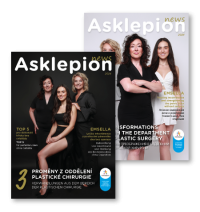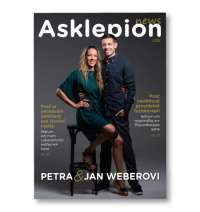client services manager
Please leave your contact information and we will get back to you right away.
We will schedule a time and tell you all about your treatment in detail.
Consult with a plastic surgeon online during video consultation.
Please leave your contact information and we will get back to you right away. We will schedule a time and tell you all about your treatment in detail.

Nose correction - rhinoplasty
- Team of experienced surgeons with a good international reputation
- State-of-the-art methods for both hard and soft nose treatment
- First-rate postoperative care
Are you bothered by a big or bumpy nose? Have you been thinking about having a "nose job" for a long time? The path to the nose of your dreams is easier than you think. Rhinoplasty can also improve breathing. Trauma in the nasal passages can affect breathing and interfere with voice modulation. Keep in mind, however, that plastic surgery of the nose is one of the most demanding procedures of aesthetic surgery and should therefore only be performed by a highly experienced expert.

HOW RHINOPLASTY IS PERFORMED
INDICATIONS
Those interested in surgery are most often bothered by shape deviations of the nose, which may be congenital or acquired as a result of an accident. In addition to aesthetics, rhinoplasty also addresses functional imperfections and can significantly improve quality of life.
CONTRAINDICATIONS
Rhinoplasty is not suitable for teenagers. It is performed only after the end of growth and puberty so that it does not interfere with the development and growth of the patient. It always depends on the extent of the procedure and the quality and type of nose skin.
COURSE OF THE OPERATION
Rhinoplasty usually takes 60 to 90 minutes. It is performed under a combination of general and local anaesthesia. Incisions are made inside the nasal openings so there is no scarring of the skin. The skin is released from the nasal bones and cartilage; hard and soft tissues are reduced and sculpted as necessary, and the nasal mucosa is sutured with absorbable material.
COURSE OF RECOVERY
After surgery, you will remain at the clinic until the second day. Your nose will be packed with gauze and an aluminium splint will be used for support. Proper care and regular massages can significantly influence the final shape of the nose.


Photo Gallery

Nose correction - rhinoplasty - FAQ
Why is rhinoplasty age-restricted?
How does the recovery process after a nose surgery (rhinoplasty) work?
How to behave after rhinoplasty?
What is the difference between open and closed rhinoplasty?
The difference between open and closed rhinoplasty relates to the surgical technique used to access the structures of the nose.
Open rhinoplasty: In open rhinoplasty, the surgeon makes an incision in the form of an inverted "V" on the columella, the tissue between the nostrils. This incision allows the surgeon to fully expose the nasal structures and provides convenient access to the nasal bones and cartilages. This technique is often used for more complex surgeries where better visualization and manipulation of nasal structures are needed.
Closed rhinoplasty, involves making incisions inside the nostrils, so no external scars are visible. This technique may be suitable for less complex surgeries where there is no need to access all nasal structures. Closed rhinoplasty generally has a shorter healing time and less swelling compared to the open technique but offers the surgeon less access and control over nasal structures.
The choice between open and closed rhinoplasty depends on several factors, including the complexity of the required modifications, the surgeon's experience and preference, and the specific goals of the patient.











